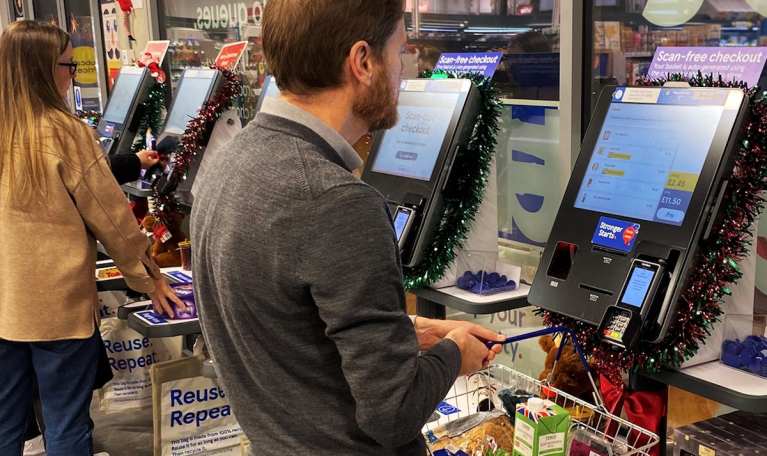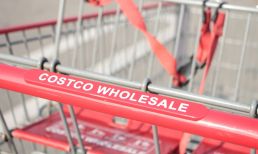The United Kingdom grocer announced Thursday (Nov. 23) that it is adding scan-free kiosks to its Tesco Fulham Reach Express store. Consumers walk up to these devices, which will show a list of all the items they have picked. The shopper can then review the list and pay without having to scan each product.
“We are constantly searching for the perfect formula to make the shopping trip as seamless and convenient as possible,” Tesco Head of Store Customer Experience Sarah Quiggin said in a statement. “We will be watching closely to see how customers react to this potential new option of having a list of their shopping presented to them automatically.”
The move marks the latest in ongoing efforts by grocers around the world to find new, more cost-effective and consumer-friendly self-service technologies in an effort to save on labor and boost store efficiency. Smart shopping carts, for one, are becoming increasingly common throughout the industry.
Earlier this month, for instance, A2Z Smart Technologies Corp’s flagship smart cart product, Cust2Mate announced a partnership with French grocery giant Carrefour to supply 2,000 carts, expected to arrive in the first half of next year. Days earlier, back stateside, Geissler’s Supermarkets, an IGA retailer with locations in Connecticut and Massachusetts, announced it is introducing Instacart’s smart Caper Carts to all seven of its stores.
In an interview earlier this year with PYMNTS, Cust2Mate CEO Guy Mordoch said the carts yield a 30% higher average basket size compared to regular shopping carts, and noted that, in the future, the company will be able to use these carts to glean “insights that are driven from data,” using these to power “advertisements and retail media on the cart.”
Advertisement: Scroll to Continue
Instacart, in addition to its smart carts, has also been offering Scan & Pay self-checkout options to grocers as part of its Connected Stores push. Earlier this year, the aggregator announced its first such deployment of the own-device self-service capability.
The technology is relatively uncommon, but more merchants are exploring the possibilities of this kind of system. According to the study “The Instant Payments Transformation Guide: Grocery, Pharmacy and Convenience Retailers,” a PYMNTS Intelligence and ACI Worldwide collaboration, which drew from a survey of 300 United States and United Kingdom retailers, 28% of U.S. merchants, including grocers, are investing in in-app scan-and-go capabilities.
Additionally, Just Walk Out and other, similar computer-vision-powered solutions that enable consumers to pick items off shelves and leave the store with them are becoming more common.
The majority of consumers, however, are not particularly interested in such checkout systems. PYMNTS Intelligence’s report “How We Will Pay Report: How Connected Devices Enable Multitasking Among Digital-First Consumers,” which draws from a survey of more than 4,600 U.S. consumer, finds that one in three would be interested in this kind of checkout experience, and 6% of connected device users already utilize this checkout method.
In fact, if Amazon’s recent moves are any indication, consumers continue to demand more traditional self-checkout options.
Earlier this fall, Charlie Mills, head of in-store and local marketing at Amazon Fresh, announced that at a location in London, the company has implemented traditional self-checkout kiosks in addition to its existing frictionless checkout system. Plus, months earlier, Bloomberg reported that Amazon is adding self-checkout kiosks to several Fresh stores in the United States.




